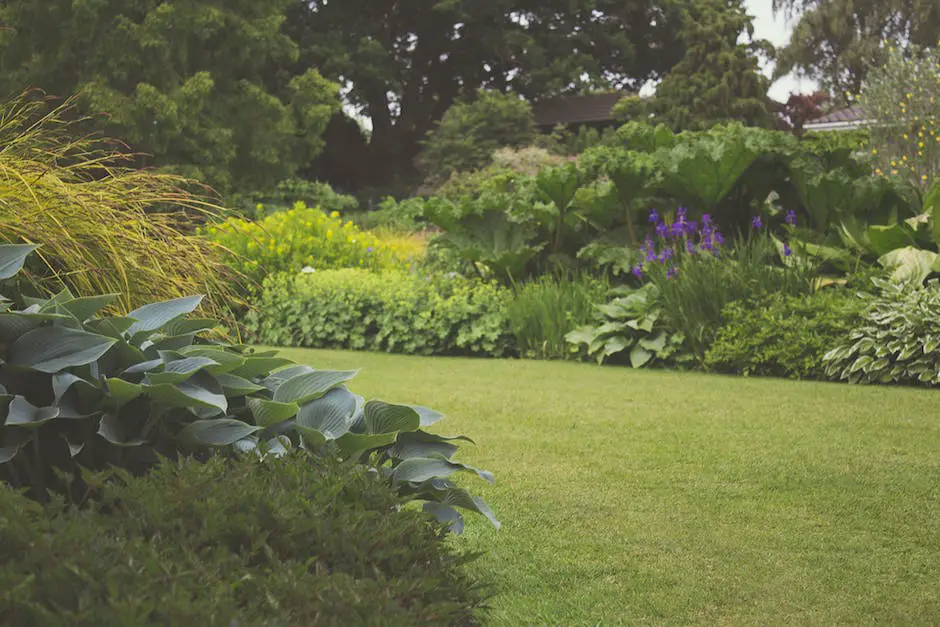A lush, vibrant lawn is the crown jewel of a home’s outdoor space, providing a place for play, relaxation, and natural beauty. Achieving that perfect patch of green, however, is not merely a matter of luck. It’s a result of understanding and working with the ecosystem beneath your feet through DIY lawn care practices.
In this post, we will delve into the bedrock of DIY Lawn Care, starting with the critical step of Soil Testing and Improvement. By learning how to examine and enhance the very foundation your grass grows upon, you can ensure that your efforts are both efficient and effective.
Moreover, we’ll explore the subtle art of Mowing and Watering Techniques, ensuring you know precisely when to cut and how much to water, as these practices are essential for sustaining a healthy turf.
Finally, we’ll tackle the pesky issue of Weed Identification and Control, arming you with knowledge to keep unwanted invaders at bay, and preserving the aesthetics and integrity of your lawn. Prepare to transform your outdoor space as we guide you through optimizing your lawn care approach.
Soil Testing and Improvement
Calling all lawn lovers and grass gurus! If there’s one truth in the world of lush landscapes, it’s that the secret to a vibrant lawn lies beneath the blades – in the soil itself. Healthy soil is the lifeblood of any proud lawn care connoisseur’s yard. But, how can you tell if your soil is more foe than friend, and what can you do to enhance it? Let’s dig in!
Step 1: Soil Testing – The Window into Your Lawn’s Soul
Before you start amending and tweaking, you need to understand what you’re working with. Soil testing is like peeking into your lawn’s diary; it reveals the pH levels and nutrient content. Pick up a soil test kit from your local garden center or reach out to a cooperative extension service to run a full analysis. Aim for a soil pH between 6.0 and 7.0 – the sweet spot for most grass types.
Step 2: Adjusting pH – Balancing Act
Got your pH results? If your soil is too acidic (below 6.0), it’s time to invite lime to the party. Lime can raise the pH, making the soil more alkaline. On the flip side, if your soil is too alkaline (above 7.0), incorporating sulfur can help lower the pH level. Apply lime or sulfur according to package instructions, or consult with a lawn care expert for precise amounts.
Step 3: Nutrient Boost – The Right Food for Your Soil
Nitrogen, phosphorus, and potassium – the big three of lawn nutrition – are vital for vigorous growth. Your soil test will let you know which of these nutrients are lacking. Choose a fertilizer that caters to your soil’s needs. Remember, a little goes a long way; over-fertilizing can harm your lawn. Follow the manufacturer’s guidelines to fertilize wisely.
Step 4: Aeration – Let Your Soil Breathe
Compacted soil is a no-go for root growth. Aeration is like hitting the refresh button; it allows air, water, and nutrients to penetrate the ground. Use a core aerator for best results, removing small plugs of soil throughout your lawn. This is best done in the growing season when the grass can recover quickly.
Step 5: Organic Matter – The Gift That Keeps on Giving
Top-dressing your lawn with compost or well-rotted manure is the equivalent of serving your soil a gourmet meal. This step improves soil structure, provides nutrients, and enhances moisture retention. Spread a thin layer over your lawn and use a rake to work it in gently.
Step 6: Regular Lawn Care Maintenance – Keep It Up!
Lastly, remember that soil health isn’t a one-and-done deal. Regular monitoring and maintenance are pivotal. Keep testing your soil every couple of years, and adjust your ongoing care routine accordingly.
And there you have it, fellow turf enthusiasts – a straightforward plan to determining and enhancing your lawn’s soil quality. By following these steps, you’re bound to create a foundation that will make the neighbors green with envy. Now, go forth, and let those grass blades sway with pride over the beautiful soil that lies beneath!

Mowing and Watering Techniques
A lush, green lawn is the hallmark of pride for many homeowners. To keep that swath of outdoor carpet in tip-top shape, understanding the best practices for mowing and watering is key. Let’s dive straight in!
Mowing: The Cut is Everything
The first step to keeping your lawn healthy through mowing is to ensure your mower blades are sharp. Dull blades tear grass, resulting in a frayed, uneven look and opening the door for pests and disease. Aim to sharpen or replace mower blades at least once each mowing season.
Height is another crucial factor. The general rule of thumb is the one-third rule: never remove more than one-third of the grass blade length in a single mow.
Cutting it too short—known as scalping—can stress the grass and make it more susceptible to disease. Depending on the type of grass, maintain a height between 2 to 3 inches, which helps to shade the soil, reducing water evaporation and preventing weeds.
Changing your mowing pattern is equally important. Mowing in the same direction every time can compact the soil and create ruts. By alternating patterns, the grass blades will stand taller and straighter.
Lastly, consider the clippings as a gift to your lawn. Unless they clump, leave them to decompose on the lawn. They will return valuable nutrients back into the soil, acting as a natural fertilizer.
Watering: It’s All About Timing and Technique
When it comes to watering, timing is everything. The golden hours for watering are in the early morning, ideally just before dawn. This allows water to soak to the roots before the heat of the day can start evaporation. Evening watering isn’t ideal as it can leave the grass wet overnight, increasing the risk of disease.
The frequency of watering is less important than the amount of water used. Lawns typically need about 1 to 1.5 inches of water per week, either from rainfall or irrigation. To avoid guesswork, use a rain gauge to track how much water the lawn is receiving from rainfall and adjust your watering accordingly.
Deep, infrequent watering is the goal. This encourages grass roots to grow deeper in the soil, seeking moisture and thereby improving drought resistance. Light, frequent watering, on the contrary, can lead to shallow root growth and weaker grass.
Different soil types also require different watering approaches. Clay soils retain moisture but are slow to absorb water, so applying water too quickly can lead to runoff. Sandy soils absorb water quickly but also dry out faster, thus may require more frequent watering.
Efficient watering is not only good for your lawn but also for the environment. Use a sprinkler system that can be timed and adjusted to avoid waste. Sprinklers that mist or spray high into the air can lose a lot of water to evaporation; opt for ones that keep the water close to the ground.
Implementing these mowing and watering best practices will ensure your lawn stays healthy, robust, and the envy of the neighborhood. Remember, the key to a great lawn lies in the care and attention to detail. Happy gardening!

Weed Identification and Control
Moving deep into the realm of lawn care, one of the trickiest adversaries any hobbyist must face is the bane of gardeners everywhere: weeds. These unwelcome visitors can be quite the headache, but with the right knowledge and strategies, maintaining that pristine, envy-worthy lawn is absolutely doable.
Identification is step one, and it’s a biggie. You can’t tackle what you don’t know! Weeds come in all shapes and sizes, and not all are created equal. Broadleaf weeds such as dandelions, clover, and plantain are easily recognizable with their non-grassy leaves.
Grassy weeds, like crabgrass and foxtail, blend in more with your lawn but have different growth habits and textures. Use a weed identification guide to pinpoint the types you’re dealing with — your fight strategy hinges on this intel.
Hands-on action is up next. Hand-pulling is the go-to method for immediate results, especially when dealing with larger broadleaf weeds. It’s most effective when the soil is wet since roots come out more easily.
For this, you’ll need a good pair of gloves and maybe a weeding tool to help pry up those stubborn roots. Remember, get as much of the root system as possible to prevent a quick return.
For grassy weeds, pre-emergent herbicides can work wonders. Apply these products in early spring before the weed seeds have a chance to germinate. Read labels carefully for application timing and methods, as effectiveness is time-sensitive and varies according to the type your lawn is up against.
When it comes to post-emergent herbicides, precision is key. Spot treatments are best here — you want to target only the weeds and not harm the surrounding grass. Be sure to choose a selective herbicide that won’t kill your type of lawn grass. And weather matters: calm, dry days prevent drift and ensure the herbicide sticks to the weeds.
Another effective control tactic is to maintain a thick, healthy lawn; it’s a natural weed deterrent. Overseeding helps, as does proper feeding. If your lawn is thick with strong, healthy grass, it’ll be tough for weeds to find a home.
Mulch is your friend in gardens and around shrubs. It blocks sunlight that weeds need to sprout. Use organic mulch like wood chips or straw to a depth of about two inches, taking care not to pile it against tree trunks or plant stems.
Sometimes, despite our best efforts, weeds make a showing. That calls for regular patrols and spot treatments before they have a chance to spread. Weed early, weed often, as the saying goes — this is essential for keeping those pesky plants at bay.
Of course, the key to all these strategies is consistency. It may take a season or two to see a significant decrease, but stick with the plan. A little patience and elbow grease will pay off, leaving you with the lush, verdant lawn that will be the pride of the neighborhood. Keep at it, and those weeds won’t stand a chance!

Mastering the Art of Lawn Care
Mastering the art of lawn care is a rewarding journey that enhances your home’s curb appeal and creates a serene outdoor retreat. From the rich, well-balanced soil to the impeccably trimmed blades of grass, each step you take in nurturing your lawn pays off in lush, tangible results.
Armed with the know-how of effectively analyzing soil quality, executing proper mowing and watering techniques, and controlling invasive weeds, you stand ready to curate a thriving expanse of greenery.
Let the knowledge you’ve gained invigorate your resolve to cultivate a lawn that not only reflects your dedication but also invites nature’s timeless beauty right to your doorstep.

